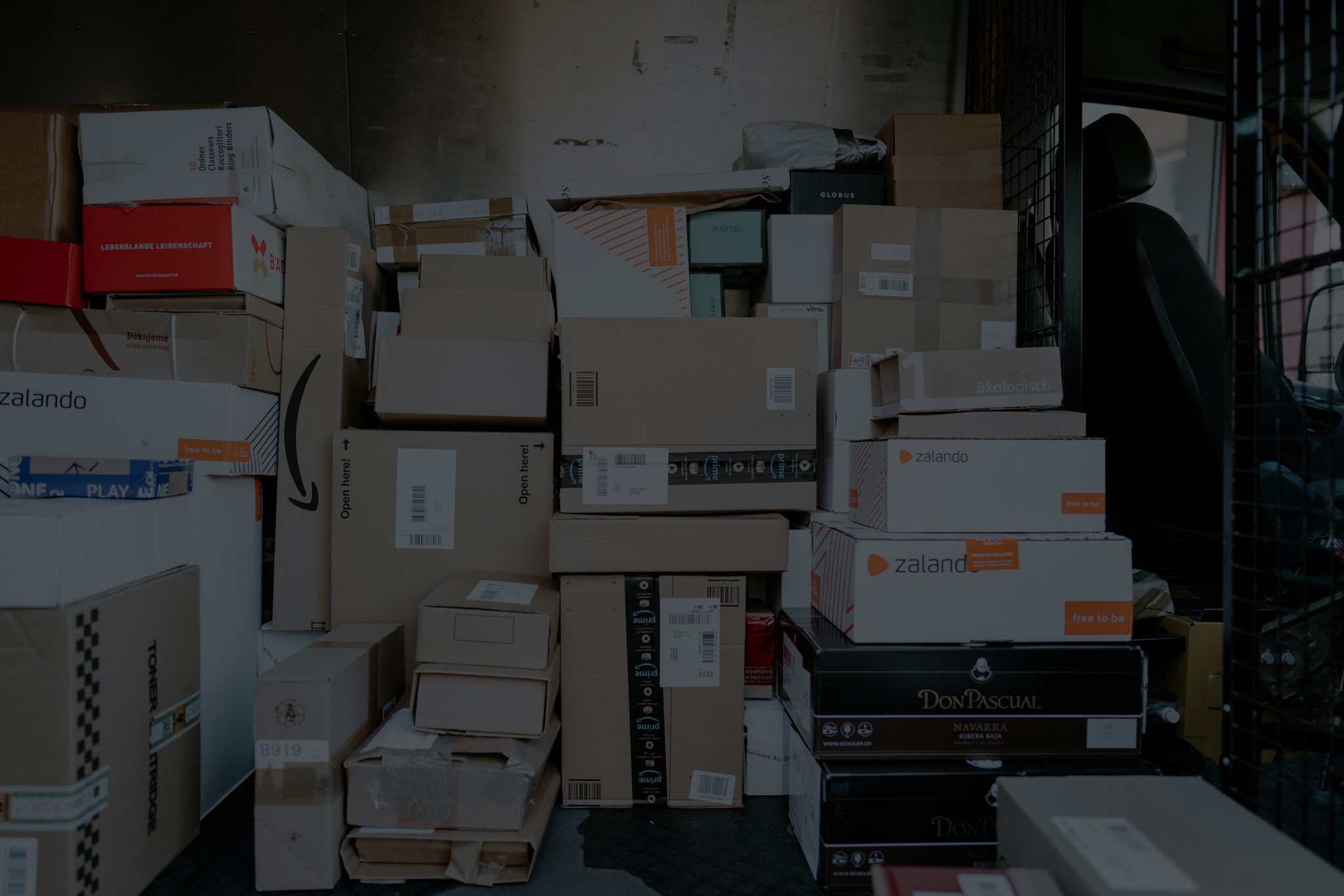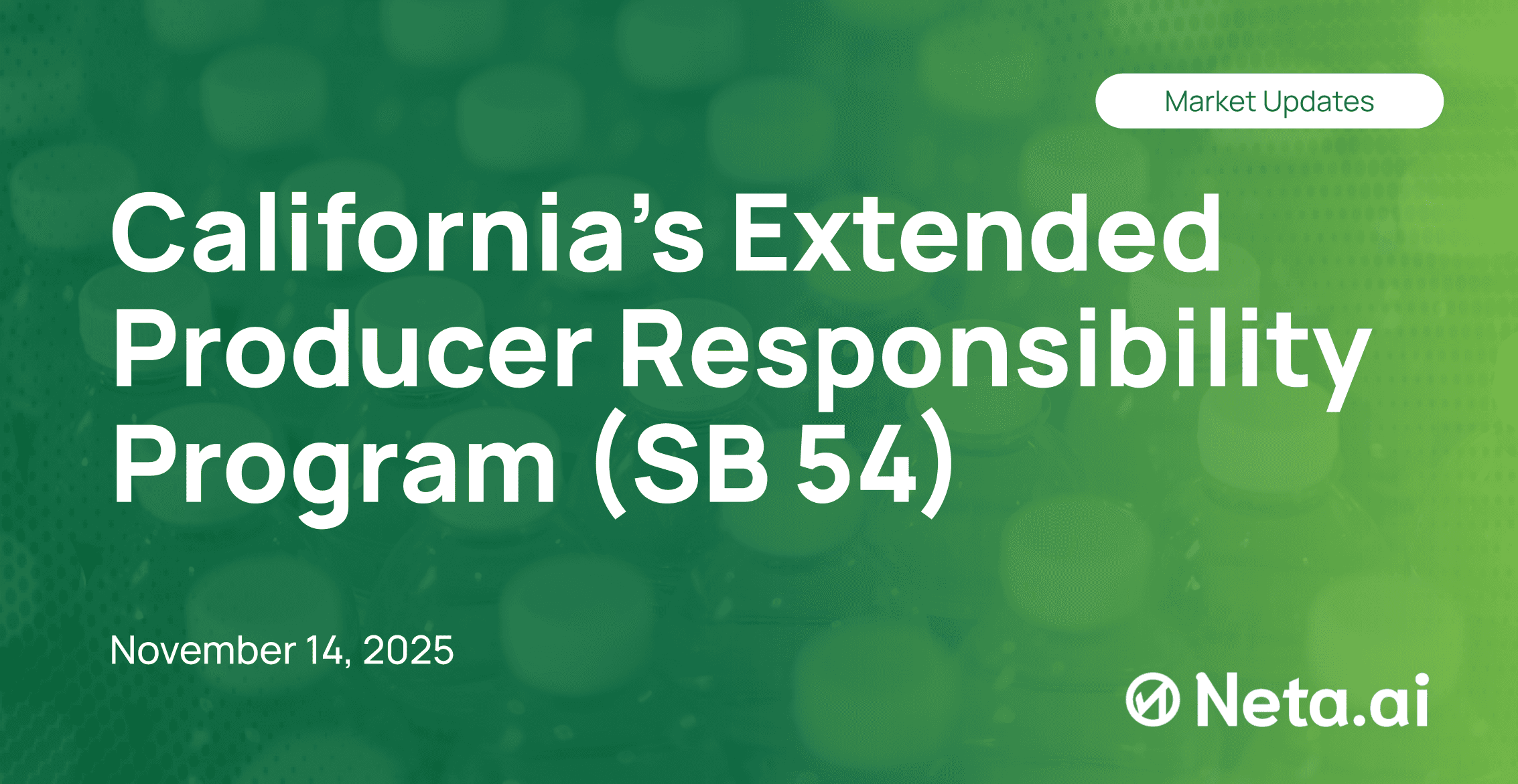All About PFAS, Part 3 – Global Regulations: How the World Is Responding
All About PFAS, Part 3 – Global Regulations: How the World Is Responding
All About PFAS, Part 3 – Global Regulations: How the World Is Responding
IN-DEPTH SERIES
August 27, 2025

Grace Lam
Grace Lam
·
Co-Founder

Samiya Sen
Samiya Sen
·
Blog Contributor



In the previous post, we explored what PFAS are and how they’ve permeated industries from cookware to cosmetics, and especially food packaging. We also discussed the regulatory landscape and policy responses for PFAS in the US. As awareness of PFAS’ health and environmental risks grows, governments around the world are moving to regulate or eliminate these “forever chemicals.”
In this final post of the series, we cover the latest global PFAS regulations with a specific focus on PFAS in product packaging. While policies differ in scope and enforcement, the global trend is clear: momentum is building toward phasing out PFAS in manufacturing and consumer goods.
Key Takeaways
The EU is leading with sweeping restrictions, including a ban on PFAS in food-contact packaging starting in 2026.
Canada and Australia are tightening frameworks, moving toward class-based bans and PFAS-free packaging.
Japan has banned over 100 PFAS and is updating food-contact safety laws to prohibit their use in packaging by mid-2025.
For global brands, the safest approach is clear: prepare for PFAS-free packaging across all markets.
In the previous post, we explored what PFAS are and how they’ve permeated industries from cookware to cosmetics, and especially food packaging. We also discussed the regulatory landscape and policy responses for PFAS in the US. As awareness of PFAS’ health and environmental risks grows, governments around the world are moving to regulate or eliminate these “forever chemicals.”
In this final post of the series, we cover the latest global PFAS regulations with a specific focus on PFAS in product packaging. While policies differ in scope and enforcement, the global trend is clear: momentum is building toward phasing out PFAS in manufacturing and consumer goods.
Key Takeaways
The EU is leading with sweeping restrictions, including a ban on PFAS in food-contact packaging starting in 2026.
Canada and Australia are tightening frameworks, moving toward class-based bans and PFAS-free packaging.
Japan has banned over 100 PFAS and is updating food-contact safety laws to prohibit their use in packaging by mid-2025.
For global brands, the safest approach is clear: prepare for PFAS-free packaging across all markets.
Europe: Spearheading the Movement
The European Union has a long history of regulating hazardous chemicals, including PFAS. The REACH Regulation (Registration, Evaluation, Authorisation and Restriction of Chemicals) provides a more comprehensive framework. REACH designates some PFAS compounds as restricted substances and others as “Substances of Very High Concern” on a candidate list for potential phaseout. For example, in September 2024, the European Commission restricted the use of PFHxA, a subgroup of PFAS, in applications including consumer textiles, food packaging, and cosmetics.
Momentum is accelerating. In February 2023, five EU member states submitted a proposal to the European Chemicals Agency (ECHA) to restrict nearly all PFAS uses, potentially phasing out thousands of compounds over the next decade. This includes authorities from Denmark, Germany, the Netherlands, Norway, and Sweden. The European Commission is expected to issue its decision by the end of 2025.
For packaging, the most critical development is the EU Packaging and Packaging Waste Regulation (PPWR). We published a PPWR primer last month covering the basics of this regulation. As for PFAS, starting August 12, 2026, food-contact packaging with PFAS above strict thresholds will be prohibited on the EU market. That means grease-resistant wrappers, fiber trays, and other PFAS-treated containers will need to be redesigned with safer coatings.
Canada and Australia: Tightening Controls
Canada banned PFOS, PFOA, and long-chain PFCAs under its Prohibition of Certain Toxic Substances regulations over the past decade. More recently, Canada has been moving toward a class-based approach. In 2023-2025, the Canadian government conducted a comprehensive State of PFAS report, which concluded that all PFAS (except large fluoropolymer plastics) should be considered “toxic” under the Canadian Environmental Protection Act. Based on this, Canada has proposed adding the entire PFAS class to CEPA’s Schedule 1 toxic substances list. This listing, expected to be finalized in 2025, is a critical step that enables the government to enact broad regulations on any use of PFAS. Even ahead of formal bans, Canadian authorities are pushing industry: starting in 2025, manufacturers must report any use of over 160 specified PFAS to a national inventory, improving transparency.
Australia banned three key PFAS chemicals (PFOS, PFOA, and PFHxS) from manufacture, import, and use nationwide, starting July 2025. Practically, this means any PFAS-based coatings or surfactants (for example, PFAS used in some molded fiber food containers or PFAS-treated plastics) cannot be intentionally included in items sold in Australia. Australia’s aggressive timeline places it in line with the EU’s stringent approach, demonstrating a strong precautionary principle at work.
Asia: Japan Leading the Way
Japan has taken one of the boldest steps in Asia. In late 2024, Japan’s government adopted a ministerial ordinance under its Chemical Substances Control Law that bans the manufacture, import, and use of 138 PFAS substances effective January 10, 2025. At the same time, Japan is tightening its food safety regulations for food-contact materials. Japan adopts a positive list system, requiring that only approved safe substances be used in food-contact packaging; the new PFAS ban cements that none of the highly persistent/toxic PFAS will be allowed in those applications. For companies, Japan’s regulations demand a rapid transition to PFAS-free packaging, similar to the EU’s mandate.
China is moving gradually. In 2025, the Ministry of Ecology and Environment released draft lists to restrict long-chain PFCAs, PFOA, and PFHxS compounds. While not yet comprehensive, these signals a shift toward broader PFAS control that will affect packaging producers.
Elsewhere in Asia, countries such as India and members of ASEAN have not yet introduced packaging-related PFAS laws, but international pressure and regional trade alignment make new measures likely.
Conclusion: Global Momentum, Local Challenges
Across this 3-part series, we explored what PFAS are, how the U.S. is responding, and how global regulations are accelerating. The takeaway is clear: PFAS in packaging is on its way out.
For businesses in packaging, foodservice, and manufacturing, understanding these global shifts is essential. The challenge for businesses is navigating uneven timelines and thresholds. Regulatory compliance will increasingly require supply chain transparency, material substitution strategies, and product redesign.
Packaging, compliance, and sustainability teams should:
Audit supply chains for PFAS in coatings, inks, adhesives, and plastics.
Engage suppliers to certify PFAS-free alternatives.
Plan for disclosure in markets where reporting is mandatory or pending.
Redesign packaging to meet the strictest standards (such as in the EU) to ensure global readiness.
Europe: Spearheading the Movement
The European Union has a long history of regulating hazardous chemicals, including PFAS. The REACH Regulation (Registration, Evaluation, Authorisation and Restriction of Chemicals) provides a more comprehensive framework. REACH designates some PFAS compounds as restricted substances and others as “Substances of Very High Concern” on a candidate list for potential phaseout. For example, in September 2024, the European Commission restricted the use of PFHxA, a subgroup of PFAS, in applications including consumer textiles, food packaging, and cosmetics.
Momentum is accelerating. In February 2023, five EU member states submitted a proposal to the European Chemicals Agency (ECHA) to restrict nearly all PFAS uses, potentially phasing out thousands of compounds over the next decade. This includes authorities from Denmark, Germany, the Netherlands, Norway, and Sweden. The European Commission is expected to issue its decision by the end of 2025.
For packaging, the most critical development is the EU Packaging and Packaging Waste Regulation (PPWR). We published a PPWR primer last month covering the basics of this regulation. As for PFAS, starting August 12, 2026, food-contact packaging with PFAS above strict thresholds will be prohibited on the EU market. That means grease-resistant wrappers, fiber trays, and other PFAS-treated containers will need to be redesigned with safer coatings.
Canada and Australia: Tightening Controls
Canada banned PFOS, PFOA, and long-chain PFCAs under its Prohibition of Certain Toxic Substances regulations over the past decade. More recently, Canada has been moving toward a class-based approach. In 2023-2025, the Canadian government conducted a comprehensive State of PFAS report, which concluded that all PFAS (except large fluoropolymer plastics) should be considered “toxic” under the Canadian Environmental Protection Act. Based on this, Canada has proposed adding the entire PFAS class to CEPA’s Schedule 1 toxic substances list. This listing, expected to be finalized in 2025, is a critical step that enables the government to enact broad regulations on any use of PFAS. Even ahead of formal bans, Canadian authorities are pushing industry: starting in 2025, manufacturers must report any use of over 160 specified PFAS to a national inventory, improving transparency.
Australia banned three key PFAS chemicals (PFOS, PFOA, and PFHxS) from manufacture, import, and use nationwide, starting July 2025. Practically, this means any PFAS-based coatings or surfactants (for example, PFAS used in some molded fiber food containers or PFAS-treated plastics) cannot be intentionally included in items sold in Australia. Australia’s aggressive timeline places it in line with the EU’s stringent approach, demonstrating a strong precautionary principle at work.
Asia: Japan Leading the Way
Japan has taken one of the boldest steps in Asia. In late 2024, Japan’s government adopted a ministerial ordinance under its Chemical Substances Control Law that bans the manufacture, import, and use of 138 PFAS substances effective January 10, 2025. At the same time, Japan is tightening its food safety regulations for food-contact materials. Japan adopts a positive list system, requiring that only approved safe substances be used in food-contact packaging; the new PFAS ban cements that none of the highly persistent/toxic PFAS will be allowed in those applications. For companies, Japan’s regulations demand a rapid transition to PFAS-free packaging, similar to the EU’s mandate.
China is moving gradually. In 2025, the Ministry of Ecology and Environment released draft lists to restrict long-chain PFCAs, PFOA, and PFHxS compounds. While not yet comprehensive, these signals a shift toward broader PFAS control that will affect packaging producers.
Elsewhere in Asia, countries such as India and members of ASEAN have not yet introduced packaging-related PFAS laws, but international pressure and regional trade alignment make new measures likely.
Conclusion: Global Momentum, Local Challenges
Across this 3-part series, we explored what PFAS are, how the U.S. is responding, and how global regulations are accelerating. The takeaway is clear: PFAS in packaging is on its way out.
For businesses in packaging, foodservice, and manufacturing, understanding these global shifts is essential. The challenge for businesses is navigating uneven timelines and thresholds. Regulatory compliance will increasingly require supply chain transparency, material substitution strategies, and product redesign.
Packaging, compliance, and sustainability teams should:
Audit supply chains for PFAS in coatings, inks, adhesives, and plastics.
Engage suppliers to certify PFAS-free alternatives.
Plan for disclosure in markets where reporting is mandatory or pending.
Redesign packaging to meet the strictest standards (such as in the EU) to ensure global readiness.
Europe: Spearheading the Movement
The European Union has a long history of regulating hazardous chemicals, including PFAS. The REACH Regulation (Registration, Evaluation, Authorisation and Restriction of Chemicals) provides a more comprehensive framework. REACH designates some PFAS compounds as restricted substances and others as “Substances of Very High Concern” on a candidate list for potential phaseout. For example, in September 2024, the European Commission restricted the use of PFHxA, a subgroup of PFAS, in applications including consumer textiles, food packaging, and cosmetics.
Momentum is accelerating. In February 2023, five EU member states submitted a proposal to the European Chemicals Agency (ECHA) to restrict nearly all PFAS uses, potentially phasing out thousands of compounds over the next decade. This includes authorities from Denmark, Germany, the Netherlands, Norway, and Sweden. The European Commission is expected to issue its decision by the end of 2025.
For packaging, the most critical development is the EU Packaging and Packaging Waste Regulation (PPWR). We published a PPWR primer last month covering the basics of this regulation. As for PFAS, starting August 12, 2026, food-contact packaging with PFAS above strict thresholds will be prohibited on the EU market. That means grease-resistant wrappers, fiber trays, and other PFAS-treated containers will need to be redesigned with safer coatings.
Canada and Australia: Tightening Controls
Canada banned PFOS, PFOA, and long-chain PFCAs under its Prohibition of Certain Toxic Substances regulations over the past decade. More recently, Canada has been moving toward a class-based approach. In 2023-2025, the Canadian government conducted a comprehensive State of PFAS report, which concluded that all PFAS (except large fluoropolymer plastics) should be considered “toxic” under the Canadian Environmental Protection Act. Based on this, Canada has proposed adding the entire PFAS class to CEPA’s Schedule 1 toxic substances list. This listing, expected to be finalized in 2025, is a critical step that enables the government to enact broad regulations on any use of PFAS. Even ahead of formal bans, Canadian authorities are pushing industry: starting in 2025, manufacturers must report any use of over 160 specified PFAS to a national inventory, improving transparency.
Australia banned three key PFAS chemicals (PFOS, PFOA, and PFHxS) from manufacture, import, and use nationwide, starting July 2025. Practically, this means any PFAS-based coatings or surfactants (for example, PFAS used in some molded fiber food containers or PFAS-treated plastics) cannot be intentionally included in items sold in Australia. Australia’s aggressive timeline places it in line with the EU’s stringent approach, demonstrating a strong precautionary principle at work.
Asia: Japan Leading the Way
Japan has taken one of the boldest steps in Asia. In late 2024, Japan’s government adopted a ministerial ordinance under its Chemical Substances Control Law that bans the manufacture, import, and use of 138 PFAS substances effective January 10, 2025. At the same time, Japan is tightening its food safety regulations for food-contact materials. Japan adopts a positive list system, requiring that only approved safe substances be used in food-contact packaging; the new PFAS ban cements that none of the highly persistent/toxic PFAS will be allowed in those applications. For companies, Japan’s regulations demand a rapid transition to PFAS-free packaging, similar to the EU’s mandate.
China is moving gradually. In 2025, the Ministry of Ecology and Environment released draft lists to restrict long-chain PFCAs, PFOA, and PFHxS compounds. While not yet comprehensive, these signals a shift toward broader PFAS control that will affect packaging producers.
Elsewhere in Asia, countries such as India and members of ASEAN have not yet introduced packaging-related PFAS laws, but international pressure and regional trade alignment make new measures likely.
Conclusion: Global Momentum, Local Challenges
Across this 3-part series, we explored what PFAS are, how the U.S. is responding, and how global regulations are accelerating. The takeaway is clear: PFAS in packaging is on its way out.
For businesses in packaging, foodservice, and manufacturing, understanding these global shifts is essential. The challenge for businesses is navigating uneven timelines and thresholds. Regulatory compliance will increasingly require supply chain transparency, material substitution strategies, and product redesign.
Packaging, compliance, and sustainability teams should:
Audit supply chains for PFAS in coatings, inks, adhesives, and plastics.
Engage suppliers to certify PFAS-free alternatives.
Plan for disclosure in markets where reporting is mandatory or pending.
Redesign packaging to meet the strictest standards (such as in the EU) to ensure global readiness.
Since you made it this far, why not sign up for our newsletter?
Since you made it this far, why not sign up for our newsletter?

Make smarter
packaging decisions
See how we can cut your time spent on packaging compliance and data tracking by half

Make smarter
packaging decisions
See how we can cut your time spent on packaging compliance and data tracking by half

Make smarter
packaging decisions
See how we can cut your time spent on packaging compliance and data tracking by half




